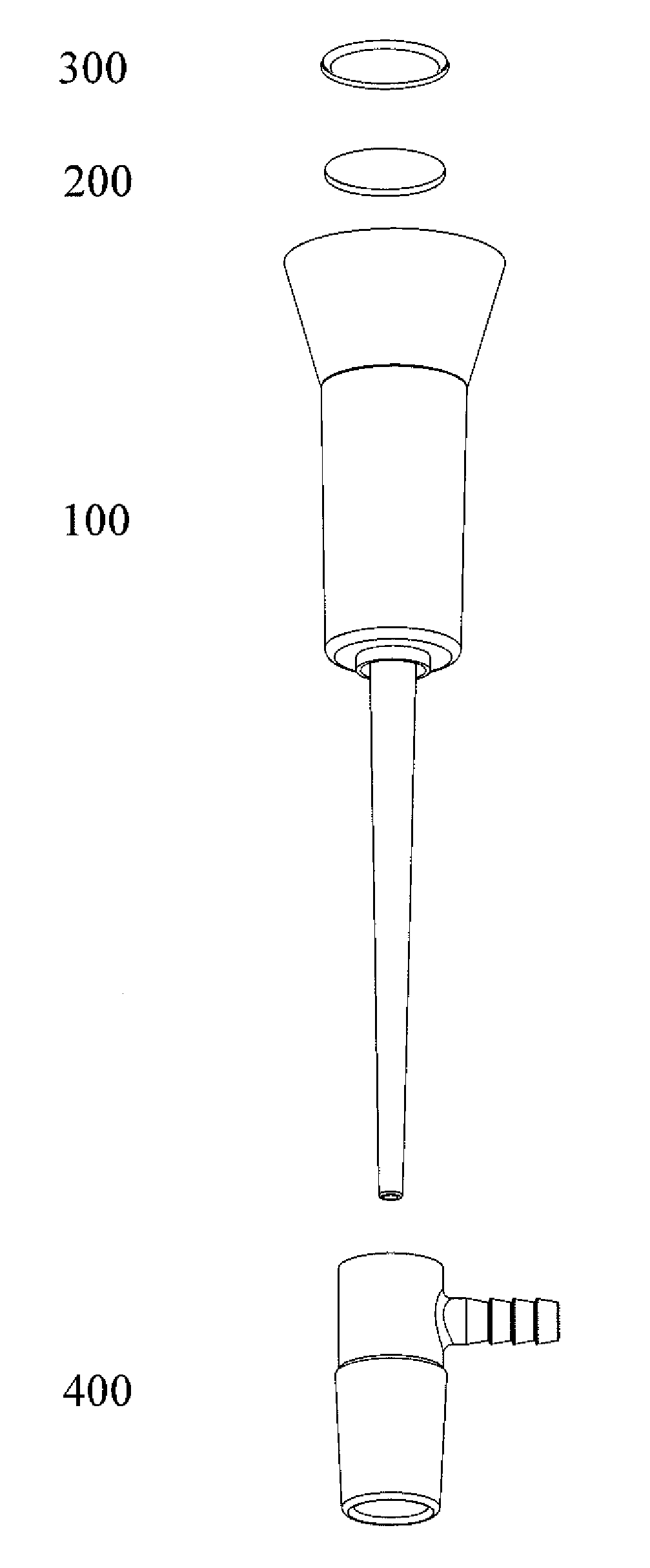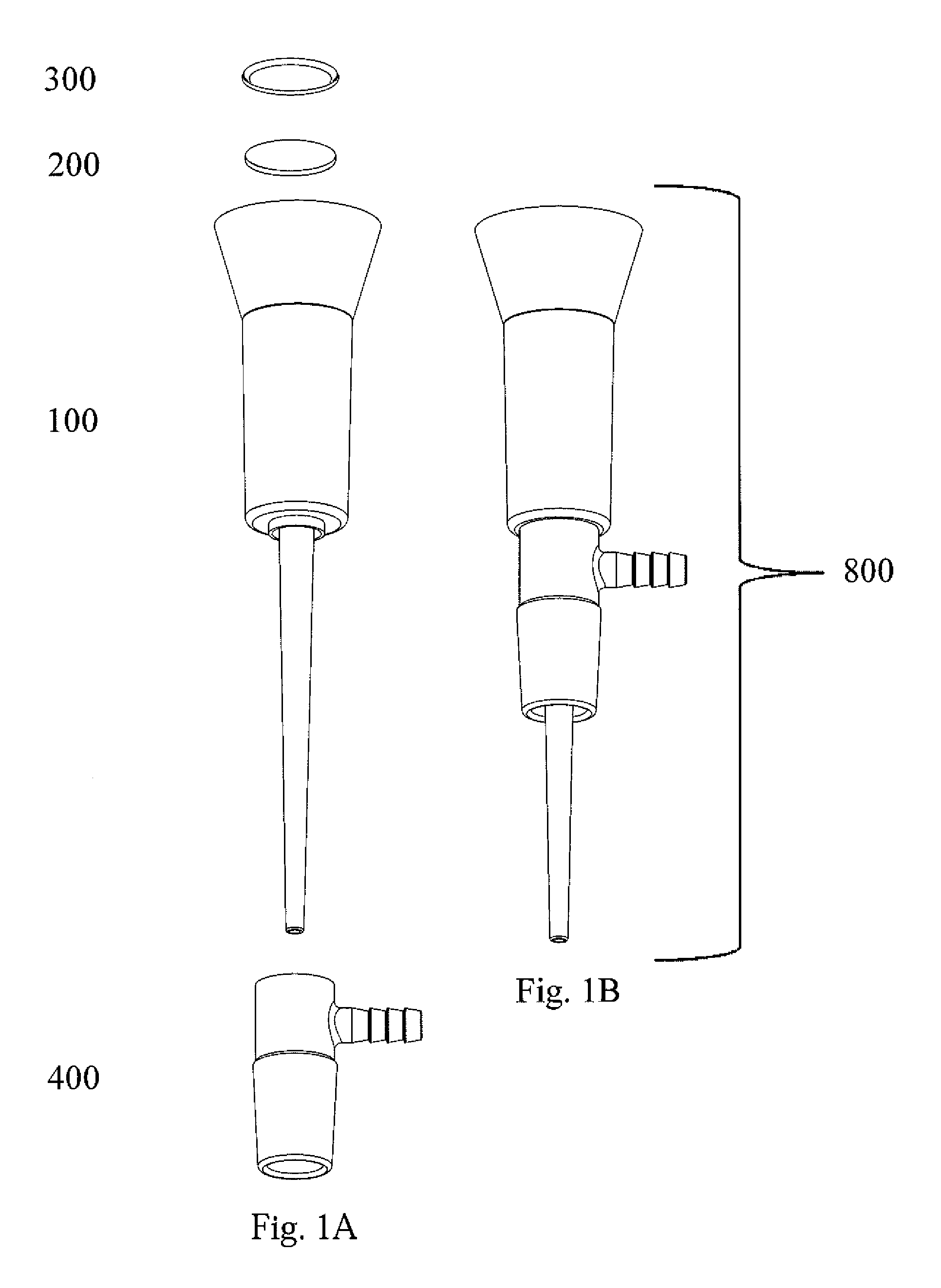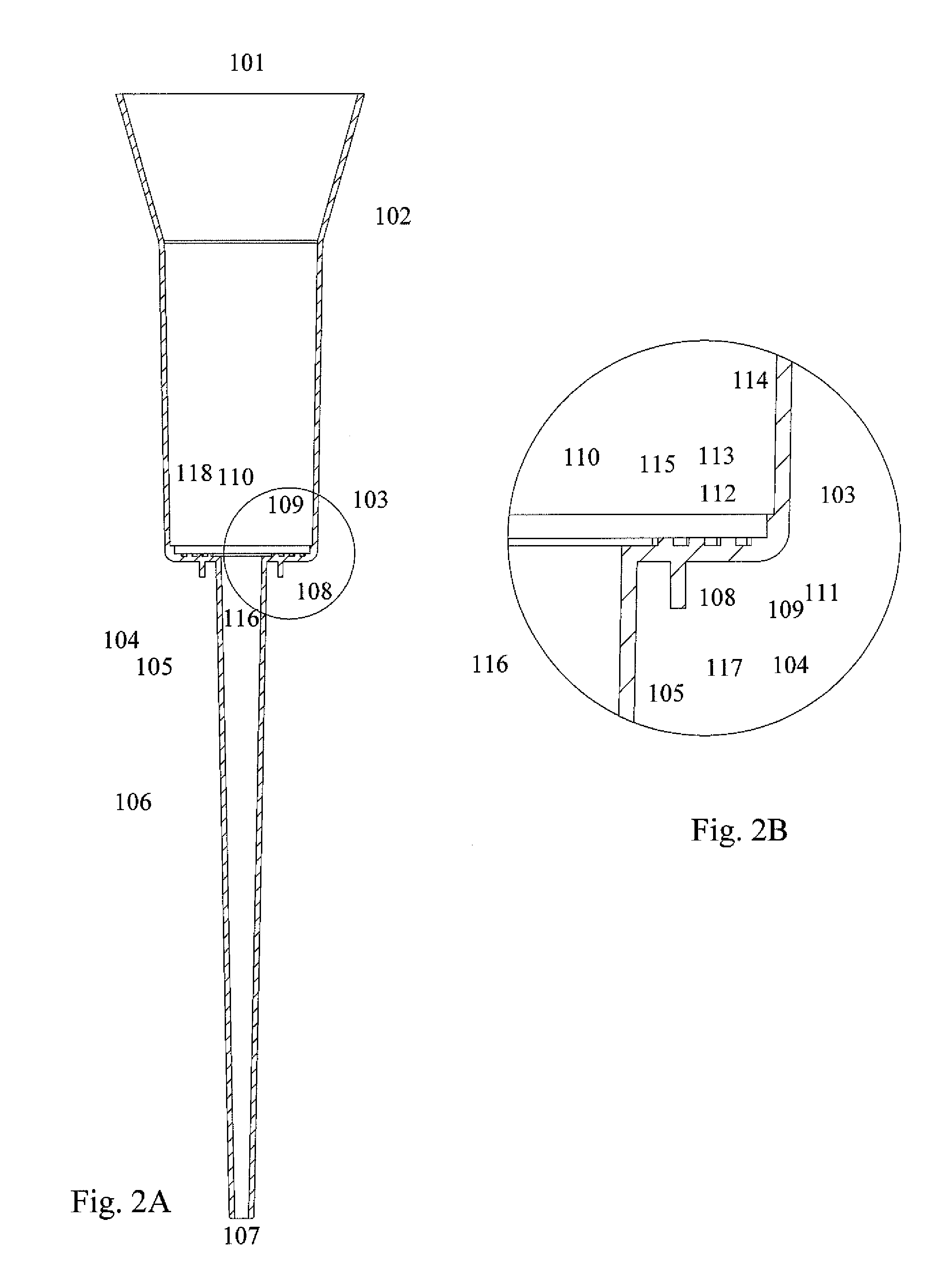In the operation of the vacuum filtration, the
wear debris generated from the rubber seal can enter into the receiving receptacle, causing serious contaminations to the filtered fluid sample.
After continued use, the rubber seals gradually wear or dry out, eventually leading to an
air leak into the filtration
system and
resultant reduction in the vacuum filtration speed and effectiveness.
It is very difficult to clean the perforated plate and / or filter media of Buchner funnels due to the clogging or obstruction by solid materials.
The clogging solid materials may eventually enter into the receiving receptacle, easily contaminating the filtered samples.
The clogging solid materials, such as catalyst particles, may also directly or indirectly react with the filtered samples, significantly impacting the purity and / or quality of the filtered samples.
In the application of the Buchner funnels with fritted filter discs made of borosilicate,
quartz, or other porous materials, the pores of the filter media become easily clogged up by solid materials.
Meanwhile, the use of significant amount of water and cleaning
solvent will increase the filtration cost and effort.
The existing design of the short outlet stem and the location of the outlet tip close to the side-arm connecting to the vacuum source will significantly increase the loss of volatile samples under vacuum filtration and the loss of filtered fluid samples sucked into the vacuum source.
Loss of the sample affects the product yield, directly increasing research and development time, cost, manpower, and subsequent commercialization
process design, timing and profitability.
The design of
short stem outlet can cause splashing and foaming of the filtered fluid in the receiving receptacle.
For example, splashing of the high temperature filtered fluid to the wall of the receiving receptacle can cause solid crystals precipitating from fluid or solution.
Splashing and foaming can damage the components of the filtered samples, such as the structure of macromolecules, i.e. cells or proteins.
Buchner funnels have been widely used; however, there is a lack of disposable filtration funnel with reasonably long outlet stem, a further lack of disposable filtration funnel with side-arm for vacuum connection and reasonably long outlet stem.
In some filtration operation, the
filter paper and filter media are directly placed by a hand into a vacuum filtration funnel, the solid particles in the solid-liquid sample can flow or leak from the gap between the outer edge of the filter media and the inner bottom plate or the inner sidewall of the filtration funnel to the receiving receptacle, causing the particle leakages and the
resultant failure of the effective filtration and separation.
In addition, an increase in the thickness of
filter cake dramatically accelerates the blockage and obstruction.
The smaller the pore size of the filter membranes and frits, the more pores are clogged.
Under strong vacuum conditions, the
filter paper and thin filter membrane, even sealed to the bottom of the filtration funnel, can break or crack at the seal, causing the particles and unfiltered sample sucked into the receiving receptacle and severely impacting the filtration and separation.
The final filter at the bottom is sealed to the funnel; however, all the prefilters contact the funnel with non-absolute or releasable seal rings, allowing the passage of unfiltered sample.
Practically, the sealing joints in the strong vacuum condition may crack, resulting in the unfiltered sample sucked to the receiving vessel.
The long stirring rods made of glass and plastic sometimes directly contact and inevitably damage the seal welded joints, eventually leading to the unfiltered sample sucked into the receiving receptacle.
In addition, above filter frits or membranes and the funnel sometimes are made of different materials showing different melting properties, which are very difficult to form the leak-free seal, and only sealed to the inner bottom of the funnel without a protective seal.
A slight crack on the seal welded joints can cause the unfiltered samples sucked into the receiving receptacle.
U.S.
Patent Application 20100038303 and
Chinese Patent Application 2010800640629 disclose a disposable
polymer-structured filtering kit, but the lack of a welded integration between the filter frit and the filtration funnel will cause the leakage of unfiltered sample under vacuum conditions.
Many of Buchner funnels used in the laboratory are in fact made of glass individually by hand, suggesting a high labor cost, relative high pricing, and easily-broken feature of all the glassware.
Some large Buchner funnels are made of
ceramic, relatively bulky and heavy, and inconvenient to move during use.
However, all these funnels have no side-arms for connection to the vacuum source, need rubber
gasket to seal, and not convenient to use.
U.S.
Patent Application 20100038303 and
Chinese Patent Application 2010800640629 disclosures a filtration funnel which needs to connect with an external glass-made side-arm in application and not convenient.
 Login to View More
Login to View More 


